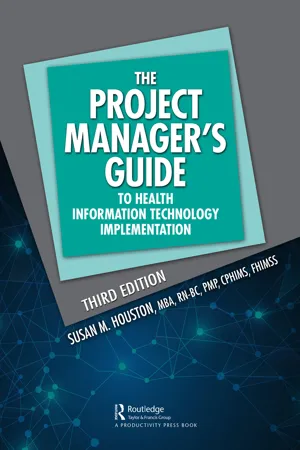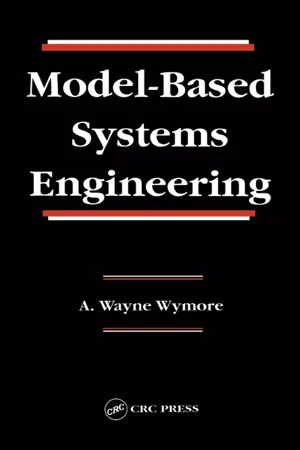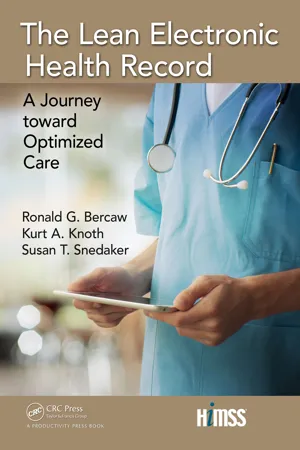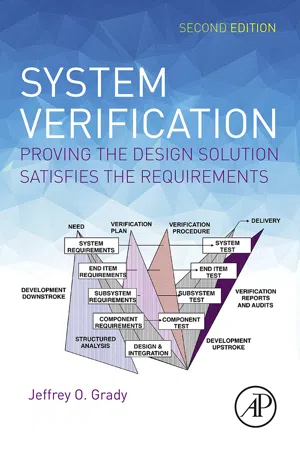System Testing
System testing is a phase of software testing where the entire system is tested as a whole to ensure that all components work together as expected. It involves testing the system's functionality, performance, and reliability in various scenarios to identify any defects or issues. The goal is to validate that the system meets the specified requirements and functions correctly in its intended environment.
7 Key excerpts on "System Testing"
- Susan M. Houston(Author)
- 2021(Publication Date)
- Productivity Press(Publisher)
...This concept also applies to COTS systems, in which the software is configured to meet the organization's processes. If, for example, there is an option of what happens when the user double clicks on a patient name in the patient list, does the expected result occur? Unit testing is also applicable for any ongoing changes made to the system during operations and maintenance. This is also called “component testing” and is the only type of testing with which the developers should be involved. Once development is complete, the code is moved to a dedicated test environment where all changes are controlled to minimize the impact to the ongoing testing processes. For smaller systems, testing may occur in a combined development/test environment. In this environment, functional testing is conducted to determine that the integrated components function as designed. Functional testing is completed by the testing staff and is based on the functional requirements. Defined test scripts are used to perform functional testing; each script is written to verify a specific requirement or a group of requirements. A sample test script is in Table 11.1. Besides testing how the integrated components function, based on the requirements, functional testing ensures that the code follows the organizations business processes. This includes a series of tests using normal and erroneous data that should mimic what real users would enter. Table 11.1 Portion of Sample Test Script # Task Data Expected Outcome P/F Comment 1 Enter URL <URL to be opened> Website appears with logo in top right corner, login/password fields and privacy verbiage at the bottom P 2 Enter login/password and select “Enter” Login=testrn; PW=testrn The home screen of the application appears and displays… F Received the error “error verbiage documented here” 3 Testing the integration or connection between multiple modules, multiple systems, or portions of a single system is called system integration testing...
- David Stokes(Author)
- 2003(Publication Date)
- CRC Press(Publisher)
...The purpose of Software Integration Testing is, therefore, to ensure that the various software components all function correctly together. At a higher level, Software Integration Testing is also used to test the interfaces between different systems. In order to evaluate the functioning of the interface it is necessary that the individual systems (or at least those functions in the system responsible for handling the interface) have been fully tested. When defining Software Integration Tests the purpose is not to challenge test the individual modules or systems, but to ensure that the modules or systems function correctly together in a robust, reliable and predictable manner. Where appropriate, stress testing (or challenge testing) may be part of this. The objectives of the Software Integration Tests should be clearly traceable to the appropriate sections of the Software Design Specification(s)...
- eBook - ePub
- A. Wayne Wymore(Author)
- 2018(Publication Date)
- CRC Press(Publisher)
...Every component, hardware, software, or bioware, will be tested during Phase 4, system development, and possibly also even in Phase 3, full-scale engineering development. Testing during these phases is called developmental testing. Only when all the components are put together to form REAL_SYSTEM can system test and integration begin. System test begins in Phase 5, but the system test requirement must be established in Phase 1 even before systems engineering should permit itself to surmise what might be the properties of REAL_SYSTEM except that REAL_SYSTEM will be built on the basis of a model that satisfies all the system requirements. Thus, the discussion thus far in this chapter has been only to set the stage for what will be the case when the project reaches Phase 5 in order to gain some insight into the structure of the system test requirement that must be developed in Phase 1! Since REAL_SYSTEM is constructed on the basis of the system coupling recipe SCR* = PJN5(ISD*), and Z@* = PJN4(ISD*) is the (system theoretic) resultant of SCR*, Z@* must be considered a model of REAL_SYSTEM. That REAL_SYSTEM might not behave as predicted by Z@* is a motivation for System Testing and system integration. Once REAL_SYSTEM exists, then system life cycle Phase 5, system test and integration, begins. The objectives of System Testing 9.4 It is assumed that, since Z@* is a mathematical model for which, typically, a computer program will have been written to compute system experiment data tables for Z@* (that is, Z@* is the basis for a computer simulation), everything is known or knowable about Z@*. In particular, the value of every figure of merit has been computed for Z@*...
- eBook - ePub
Maximizing Benefits from IT Project Management
From Requirements to Value Delivery
- José López Soriano(Author)
- 2016(Publication Date)
- CRC Press(Publisher)
...The responsibility for carrying out such tests is the programmer or programmer analyst who is developing each component, and the purpose is to ensure that the component is working properly. Unit test results should provide reasonable assurance that the component is working according to specification. However, this test does not offer any conclusions about how this component will interact with the other components of the global system. Integration tests. These tests will be performed by personnel with advanced experience relative to those involved in unit testing. Their responsibility will include testing the subsystem or module to which those unit components belong. They will review validated unit test results, and then perform the designated integration testing to ensure that the different components can handle the required maximum load and level of stress and that they are properly integrated and interact correctly to result in a functional and operational subsystem that meets the test indicated in the relevant design specifications. This process is repeated successively at progressively higher levels of integration, ending in a complete system test. The test plan should also include provisions regarding the actions to be taken when a unit or system test fails. The plan should specify the variety of incidents that could cause modules and components to be returned to technical teams for correction and rectification. It should identify the process for doing this, and for arranging the repeated iterations of tests needed until we have an information system that is clean of errors. It is very important that the various test conditions are defined from the perspective of customer acceptance. To that end, test conditions should correspond to the criteria for product acceptance, and as such should be discussed and approved by users who have defined the behavior of the system they are seeking to obtain...
- eBook - ePub
The Lean Electronic Health Record
A Journey toward Optimized Care
- Ronald G. Bercaw, Kurt A. Knoth, MBA Snedaker(Authors)
- 2017(Publication Date)
- Productivity Press(Publisher)
...build? While this list is not exhaustive (nor are the ones that follow), these give you a good starting point for developing your testing plans. Though we’ll discuss super users later in this chapter, it bears noting at this critical juncture that, ideally, your super users are involved with some of this unit testing. Though many organizations may balk at subsidizing the use of clinical staff’s time in this early phase of testing, there is a tremendous upside to doing so. Namely, clinical super users become familiar with the system early on (be sure they understand the stages of testing so they have correct expectations), and clinical eyes on the soon-to-be-final product may help correct errors and omissions earlier in the cycle. Fixing errors at this juncture is always more efficient and less expensive than fixing them after the product is released to the organization. Of course, avoiding errors prior to this point is even better, but that’s why there are numerous opportunities to check work quality along the way. If your unit testing is successful, you can move into systems testing. If your unit testing has exposed many issues, you have a problem with the quality of the work or a disconnect between requirements and testing efforts. It’s time to step back and figure out the root cause before you move on to the next step in testing. System Testing System Testing moves from individual functionality (drop-downs, check boxes, etc.) to test whether the overall system is functioning as expected. In this phase, you’ll need to check that systems are processing information correctly, that data move as expected in the timeframe expected, and that all data are present, accounted for, and accurate...
- John Bartlett(Author)
- 2017(Publication Date)
- Routledge(Publisher)
...Ongoing sampling is useful when the quality of manufactured components is unproven or where there are grounds to suspect that quality of manufacture has deteriorated over time. Project teams may be able to use standard test scripts to work through or even reuse scripts from previous projects. Some scripts will have to be constructed afresh. Much testing these days is automated and may be controlled through software programs. Quality aspects to look for when considering components, either developed in-house or by a third party, are: Is there good, well-formatted and intelligible documentation accompanying a component? (In the case of software code, is the code well commented?) Is there an audit trail of version control (i.e., can one component be identified against a previous version)? Does a component include the name of an individual responsible for its development (in order to have traceability of who constructed what)? Are standard test scripts applicable, or do they have to be uniquely devised? Integration testing Integration testing is the bringing together of components to test as a deliverable or system as a whole. In some ways it emulates component testing, but the idea is to ensure that individually tested components can operate together as a whole. An obvious example of this is a completed motor car. The many components brought together need to function as expected in the total concept of a car. These include mechanical, electro-mechanical, hydraulic, electronic and liquid components, all of which need to be tested as an integrated whole. Car manufacturers have particular test routines for this, of course, but the end result still has to meet the expectations of the end-user. As I have said before, many perfectly integrated systems have failed the ultimate test – the discerning customer. Their road test will be to very different criteria than that undertaken by the manufacturing plant. The story is the same for many items in commercial and domestic use...
- eBook - ePub
System Verification
Proving the Design Solution Satisfies the Requirements
- Jeffrey O. Grady(Author)
- 2016(Publication Date)
- Academic Press(Publisher)
...In such cases, the field engineer can beat the best path by encouraging the user to include only truthful statements in their status reports. 10.2.9 Test Results Applications The results of System Testing are first useful in verifying that the system complies with system requirements. In addition, the results of System Testing are useful in confirming the validity of models used to create the system. Throughout the development process, while the system was only an intellectual entity defined in a growing list of engineering drawings, models and simulations, there was no physical reality. These models and simulations were built based on some assumptions as well as rational assessments based on science and engineering. We should have done our best to validate these models and simulations as early in their life as possible, but the availability of the complete system is the first time that some of the features of these objects could be fully validated. If System Testing confirms that the models and simulations predicted performance that is actually observed in operation of the system, then we have a very valuable resource on our hands and every right to be very proud of our development effort, or dumb luck. The reader may conclude that since the system is already built, it is of little consequence whether or not the models agree with its operation so long as we are satisfied with system operation. Why don’t we simply get rid of all of the other representations of the system? We are finished. The reality is that this system will have a long life, and in that long life it will experience phenomena that we may not understand immediately. If we have available to us a simulation that has been validated through System Testing, then we can manipulate the simulation to help us understand the cause for the problem observed in a very controllable situation. Without these resources, we may be forced to conduct dangerous flight tests to observe performance aberrations...






